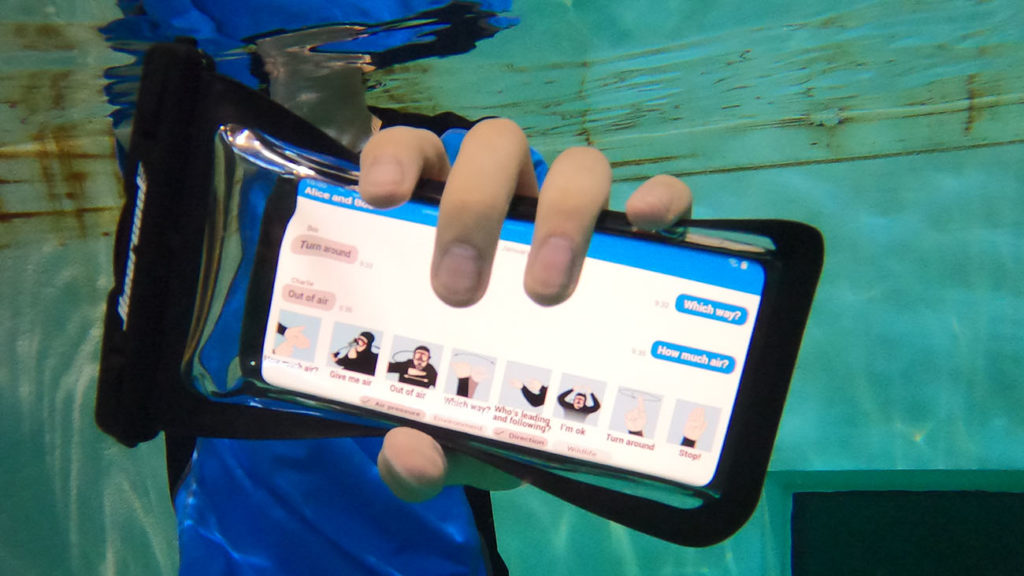Researchers at the University of Washington have developed underwater messaging apps.
Professional divers can exchangemessages using gestures. The total number of such signals can reach several hundred. They are used, for example, to tell the direction of travel or to find out how much air is left in the tank. Problems with gestures arise in conditions of poor visibility.
 AquaApp application on your phone in a protective case. Image: UW Networks & Mobile Systems Lab
AquaApp application on your phone in a protective case. Image: UW Networks & Mobile Systems Lab
To overcome this obstacle, programmersdeveloped an application that uses the acoustic signals of a microphone and speaker built into a smartphone and smart watch. The AquaApp interface contains 240 preset messages that correspond to most known diver signals. The 20 most popular are placed on the main page, the rest are sorted into categories.
Since the spread of Bluetooth and WiFisignal is difficult underwater, the application uses the acoustic waves generated by the speaker and received by the microphone. At the same time, the researchers developed an algorithm that runs on the device and quickly clears incoming information from noise and distortion.
Using the AquaApp application. Video: UW Networks & Mobile Systems Lab
To set up before sending real messagesAquaApp sends a special "preamble" code signal. Having received it, the second device determines the current level of noise and distortion and processes all further signals taking into account these data.
The researchers tested the application inplaces with different water conditions, including in the presence of intense currents, a large number of swimmers and the active movement of ships. The results showed that at a depth of up to 30 m, the application works perfectly, the signal may be distorted deeper, but the SOS signal can be sent up to a depth of 100 m.
Cover image: UW Networks & Mobile Systems Lab
Read more:
The first images of the underground part of Mars surprised scientists
From the body to the mouth: scientists have understood where the teeth came from
Where on the planet will be the most dangerous by 2100: a new map has been published